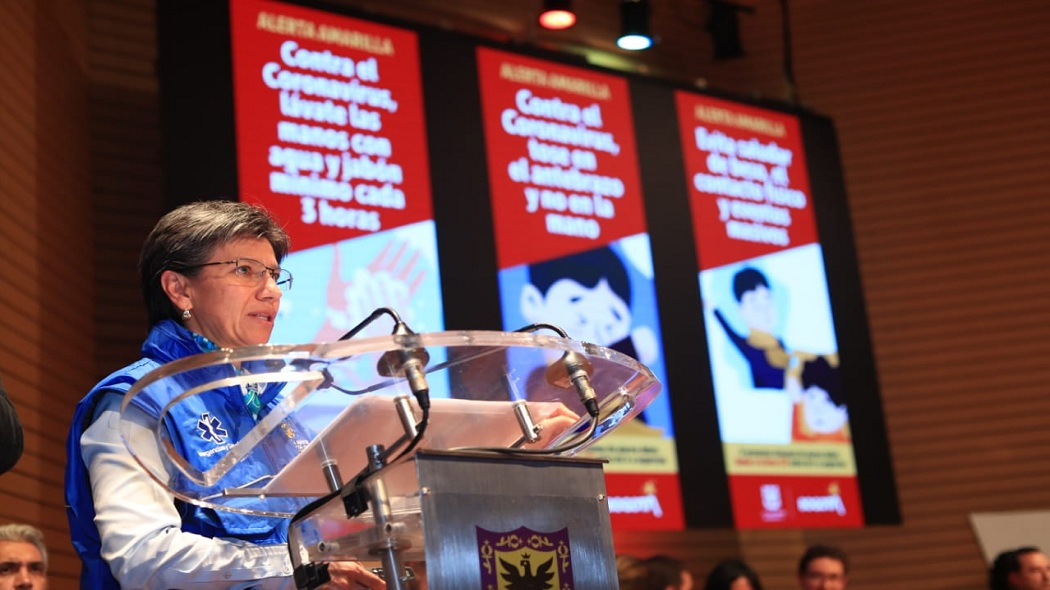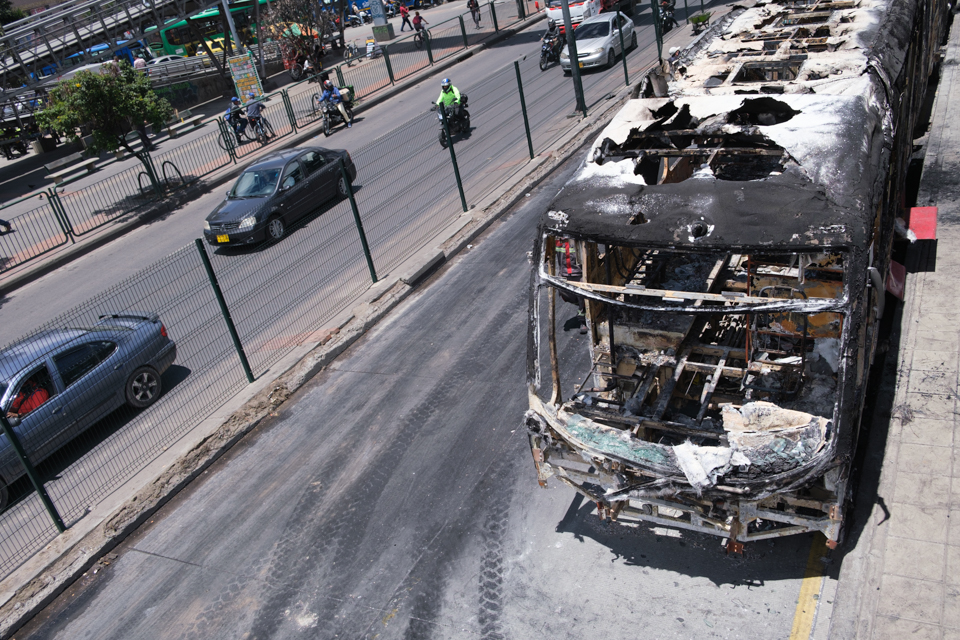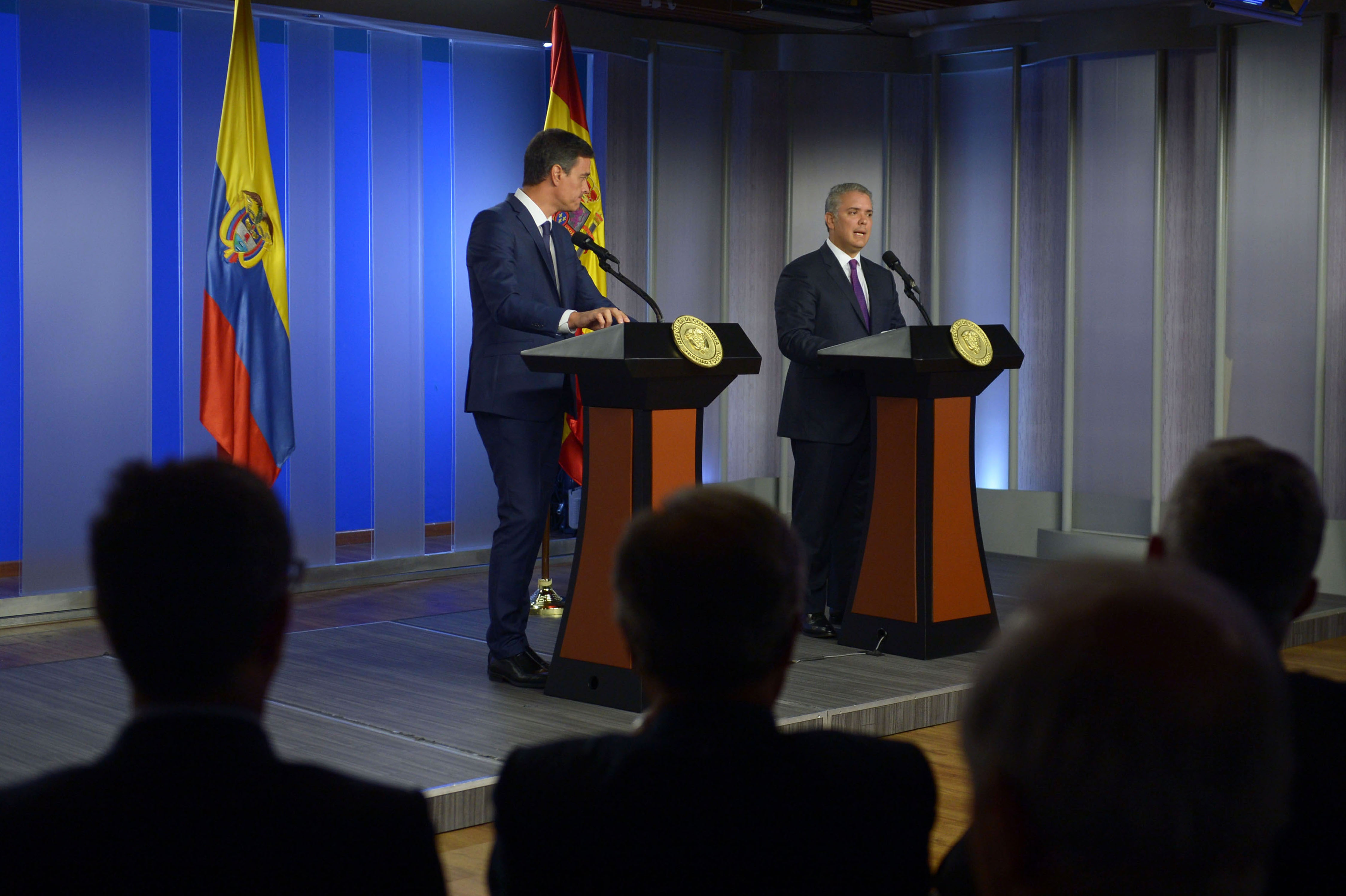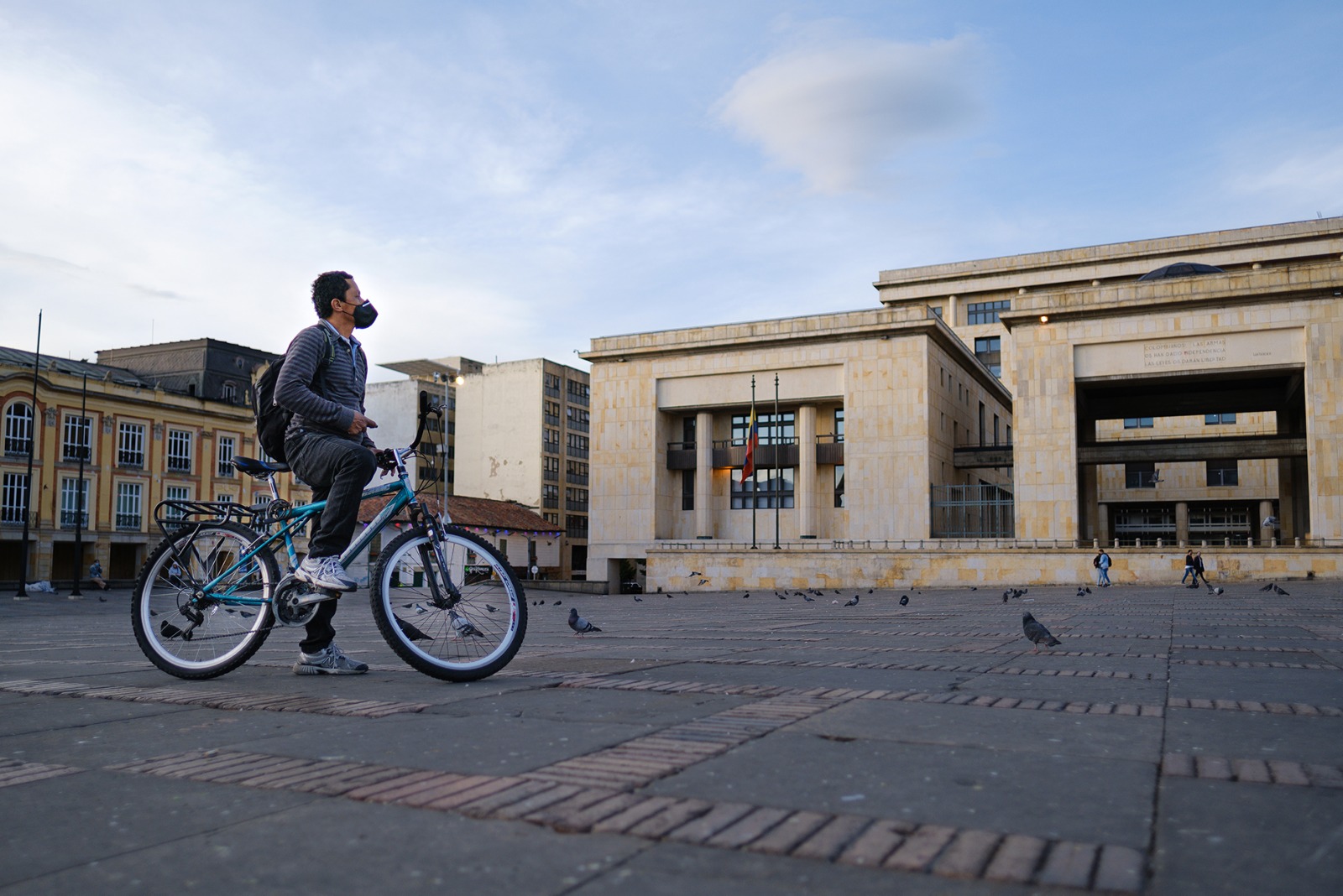Although Chilean and Colombian unrests have things in common, a comparison of both country’s protest movements is completely unfounded.
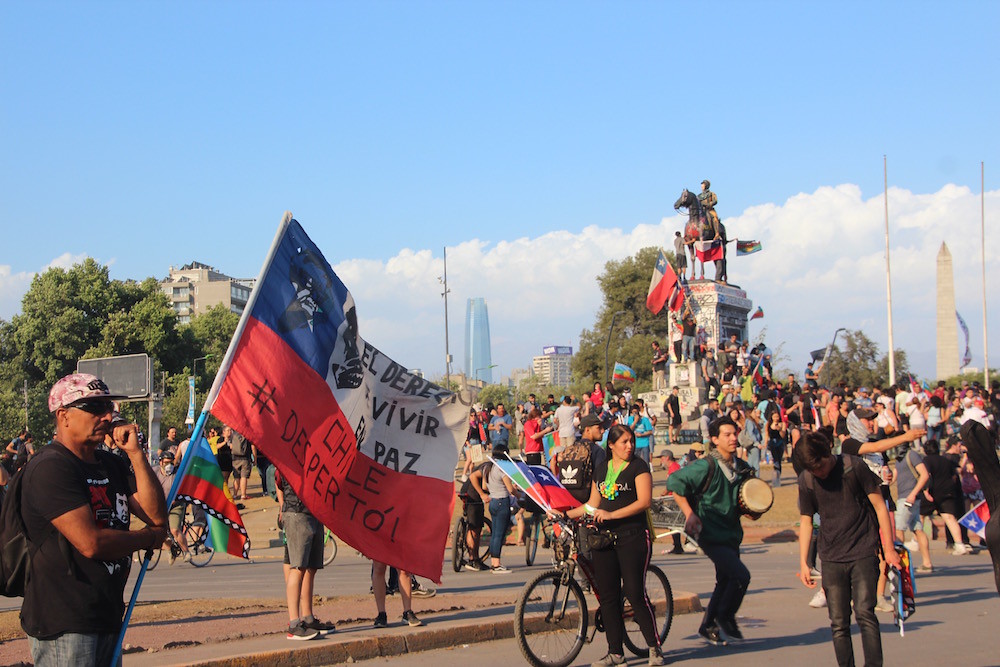
This story of wrong conclusions, misleading narratives and culturally specific demonstrations started when Colombia joined a wide range of Latin American countries, including Chile, Ecuador and Bolivia, in protesting against the status quo at the end of last year. It wasn’t long before it was labelled as part of a ‘Latin Spring’.
And even though the unrest throughout the continent has similar roots, lumping a dozen countries – all in different situations – together under the same umbrella is simply disingenuous.
Latin American Spring
“I wouldn’t accept the term ‘Latin American Spring’,” German Rio de Janeiro-based correspondent Christoph Roeckerath told The Bogotá Post. According to the ZDF journalist, while there were some elements that connected them, as each country faced similar problems, this continent is too complex to be described with a single narrative.
Anyone who regards Latin America as one homogenous space will indeed have difficulties understanding what is behind the unrest. Just because all the countries suffer from similar broad-brush problems – such as inequality or corruption – it doesn’t mean that, for instance, Haitian and Venezuelan people have the same motivations for taking to the streets.
Chile vs Colombia
Let’s take two other countries that have recently been mentioned in the same breath: Colombia and Chile. In Santiago, a 30-peso hike (COP$130) in metro fares saw an eruption of unrest which started on October 18 and still continues. What started as a small protest of students jumping subway turnstiles quickly became a massive social movement which has already forced the government into a re-writing of the controversial Pinochet-era constitution.
“It’s not about 30 pesos, it’s about 30 years,” protesters have been chanting in the streets of Santiago for almost four months now. They’re venting their anger over structural problems in the health, education and pension systems. Social inequality is the biggest issue, in a country which has been labelled “one of the fastest-growing economies in Latin America,” according to the World Bank. The challenge is that the cost of living in Santiago is similar to cities like Brussels or Frankfurt, while the minimum wage is considerably lower.
Inequality goes hand in hand with the country’s constitution, which dates back to the 17-year military dictatorship of General Pinochet in the 80s and strongly prioritises a market-driven economy. “This constitution supports the power of the elite and forces inequality,” Silvia Otero, professor for political science and international relations at Rosario University in Bogotá, told us.
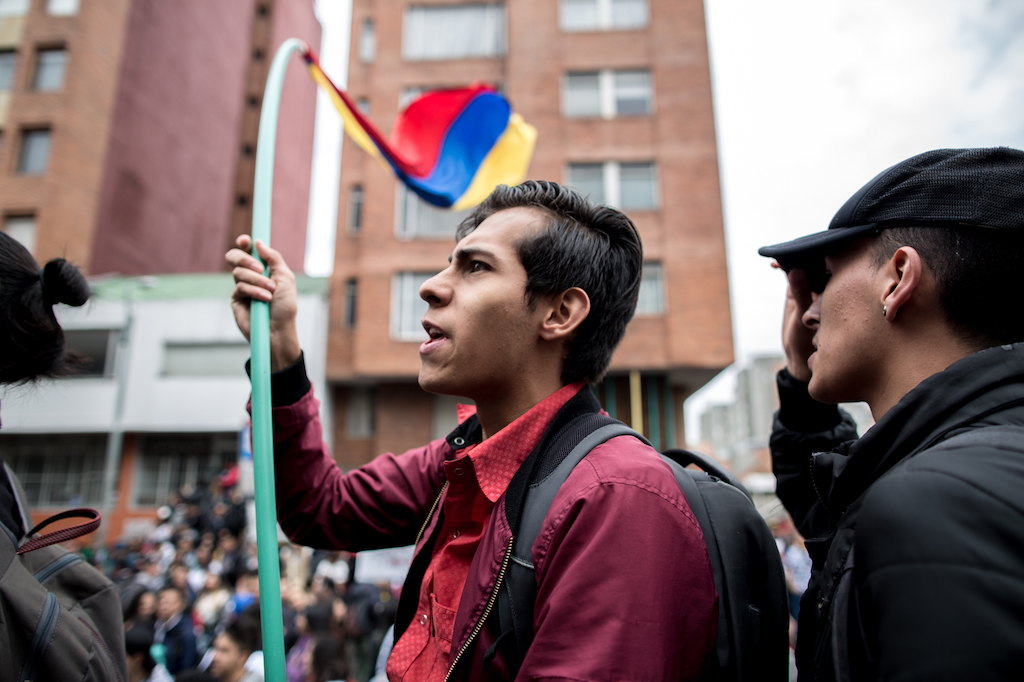
Obviously, there have been reforms since the 80s, but Chile falls behind other countries in terms of citizen participation. Not least because its current constitution still gives full power to the president. At the moment, this is Sebastián Piñera, who is among the five richest people in the country.
It’s difficult to put 50 years of increasing social and economic inequality in Chile into the same box as 50 years of armed conflict in Colombia.
But still, the similarities are clear enough. Both countries have well-performing economies with stable growth and GDPs which rank highly within Latin America. Both have right-wing, neoliberalist presidents and leading parties. Both have privatised large parts of the public sector.
And both suffer from chronic inequality. Numbers from the 2018 World Inequality report suggest that extreme inequality has slightly decreased over the past decade in Colombia, but continues to be “stubbornly high”. On top of that, in 2017 its top 10% of earners received 39% of the entire country’s income that year, according to the World Bank.
Furthermore, at just under .50, Colombia’s Gini coefficient – a common measure of inequality – remains significantly worse than the Latin American average, although it has fallen in recent years. Otero says that the narrative about inequality hasn’t taken on the same weight in Colombia. “For decades, it was all about peace and war here,” she said.
“And war is still the cleavage of Colombian politics. Inequality, therefore, has not been on the political agenda for a long time, although people know it exists,” Otero continued. According to her, it started to become a more recognised issue after the peace treaty was signed and it was certainly one of the reasons behind the protests.
But in comparison to Chile, the demands of the Colombian protests were much more diverse. People, for instance, protested for pension reform, they protested against corruption and privatisation and demanded affordable education, but these stood among many other issues. All those things were getting buried in the mass of demands, Otero said. “This makes it much harder to articulate a solution and to move forward.”
In Chile though, it was a different story: “Chilean protests have that umbrella narrative of inequality,” the 34-year old professor told me. She said that this was an important unifying element among the protesters: “It became a great way to make sense of all things that were happening. The people in the streets also started to pull their claims around the topic of inequality.”
To satisfy the people on the streets and their demands, in Otero’s eyes, a new constitution was the only solution. This was also different in Colombia. “The constitution isn’t the problem here. In Colombia, the idea is to incorporate people in the political process and make institutions more accountable to the people,” Otero claimed and continued: “There is no disappointment about the constitution in Colombia.”
And it’s not only the protesters’ demands that differ between the two countries. It’s also the culture of protest. After being repressed during the time of Pinochet, the political opposition has recovered and nowadays it plays an important role in the young democracy.
Read all our coverage on Colombia’s national strike
Regular mass protests, like the student movement in 2011/2012, did their bit to make this type of unrest a much more acceptable way to express dissatisfaction. “While Chileans are very used to it, people in Colombia are more resistant to protests because the armed conflict of the past 50 years has created a mentality of staying out of trouble,” the Rosario professor explains.
In contrast, as Otero points out, the leftist opposition in Colombia faced criminalisation and stigmatisation during the conflict. But now, we are seeing major shifts in the country’s politics as centre-left parties like the Alianza Verde become more popular. And the protests are a sign that not only are people more willing to protest, it may be the start of a new tradition.
“Colombian protests could lead to a stronger left opposition. The paro in Colombia shows that there are changes in society. Just the fact that those masses of people are protesting for such a long period of time is new. The past years have created an environment in which people are more active and more willing to participate,” she said.
It’s clear that each protest has made its mark on each country. And while, as Otero tells me, the Chilean protests almost certainly influenced and inspired the Colombian protest, it certainly doesn’t make Colombia a second Chile.

